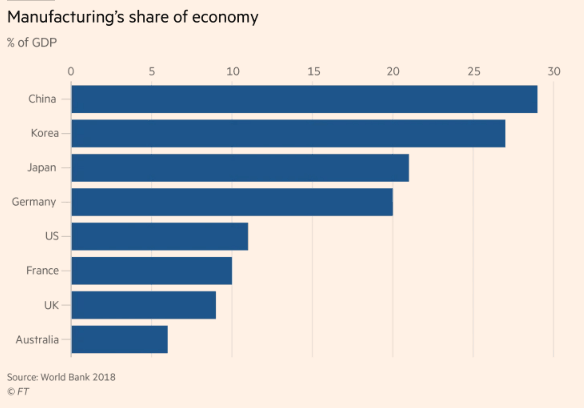The impact of the coronavirus generally, and the potentially duplicitous role of China in its spread, if nothing else from hiding the real data, is causing companies to rethink heavy dependence on Chinese sourcing.
Such a switch in supply chain thinking would simply accelerate existing trends, with US tariffs on Chinese imports, geo-political tensions and more already leading companies to consider a China-centric strategy.
The Los Angeles Times recently said it is likely that coming out of this that the US and China would enter a new cold war – certainly not conducive to maintaining China as the leading source of goods for US companies.
Another interesting article from the UK's Financial Times this week said Australia is rethinking it's approach to manufacturing.
“As part of the country's effort to tackle its coronavirus outbreak, Canberra [Australia's capitol] has promised to nurture local manufacturing to ensure it is less reliant on global supply chains, the Financial Times noted.
"Open trading has been a core part of our prosperity over centuries," Scott Morrison, Australia's prime minister, told parliament. "But equally, we need to look carefully at our domestic economic sovereignty as well."
Australia in fact has a low share of manufacturing as a percent of GDP, as shown in the chart below from the Financial Times. Australia's model has been to export commodities such as iron ore and wheat to a commodity hungry China – but then buy finished manufactured goods back.

Source: Financial Times
“Nations are realizing low-cost goods are not the only priority and China will not retain the dominant position in manufacturing it enjoyed prior to this crisis,” said John Spoehr, director of the Australian Industrial Transformation Institute.
Any Feedback on our Supply Chain Graphic of the Week? What do you think of this contributor list? Let us know your thoughts at the Feedback section below.
Your Comments/Feedback
|